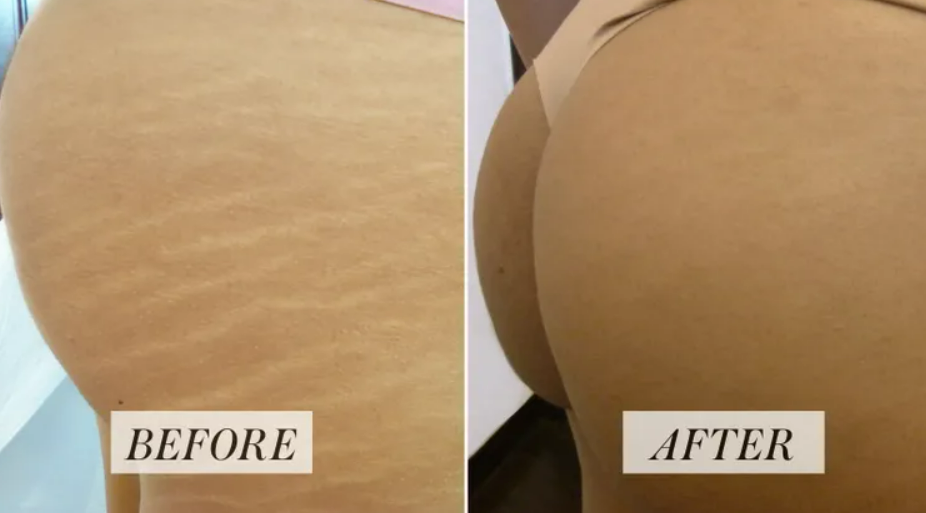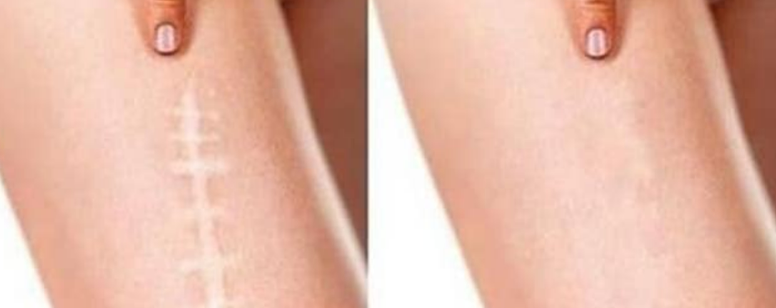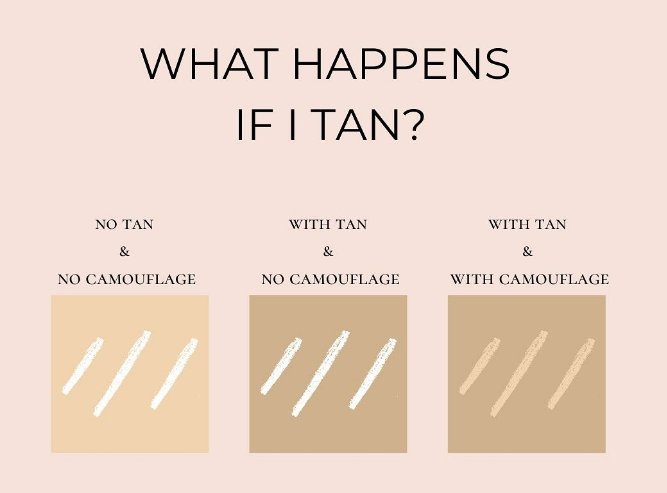
Stretch marks are indented streaks/scars that are caused by tearing of the dermis during periods of rapid growth of the body, such as during puberty or pregnancy. They often appear on the abdomen, breasts, hips, buttocks or other places on the body. They’re common in pregnant women, especially during the last trimester. Stretch marks aren’t painful or harmful, but many people are self conscious about them and don’t like the way they make their skin look.
Types of Stretch Marks:
Red Stretch Marks
The red lines indicate a recent break in the connective tissue. The color
indicates that it still has blood circulation. After a while it may turn white.
These stretch marks are not suitable for tattoo camouflage.

Superficial White Stretch Marks
These stretch marks are shallow and narrow with little difference in skin
texture. They are generally not sensitive to touch. These stretch marks are
ideal for tattoo camouflage.
Deep White Stretch Marks
White stretch marks can also be deep and wide. In these cases, the stretch marks
are usually sensitive to touch because they have some depressions and a soft
appearance. Sometimes, the coloration of them is somewhat purplish because
the skin is so thin that you can see the internal tissues. These stretch marks are
suitable for tattoo camouflage as long as they are at least 1 year old and they are white in color.
Stretch Mark Camouflage Tattooing will not get rid of the stretch marks, but it can greatly diminish their appearance. This procedure will also not have much of an effect of the texture of the skin, although a slight improvement in texture may occur. Oftentimes multiple sessions are required for optimal results.
Scar Camouflage

We can use a similar technique we use for stretch marks to help diminish the appearance of some scars as well. The ideal scars for camouflage are at least 1 year old, white in color, and similar in texture to the surrounding tissue. We can help disguise raised scars (as long as they are *not* keloids) but again the tattooing will not change the texture of the skin.

Types of scars we can camouflage: scars from surgery, injury, cosmetic procedures/surgeries, caesarian section scars, self harm, hypopigmentation and more. To be sure you are an ideal candidate for this procedure, please email choicebeauty.ca@gmail.com with pictures of the area you would like treated, or you can book in for a complimentary consultation. Please note that damaged/scarred tissue is different in every circumstance, and results may take a few sessions to achieve.
Camouflage Tattooing will not completely restore the skin to how it was before it was injured, It helps to improve color differences between the scar and the surrounding tissue, making it much less noticeable. It is important to have realistic expectations. In addition, Camouflage Tattooing is a process, not a one time “cure”. The area will look darker, inflamed and somewhat swollen after a tattooing session, and true healed results can take a few weeks to emerge. Because of this healing process, sessions must be spaced 6-8 weeks apart.

The most common question I get from clients is: “What will it look like if I tan?” First of all, we recommend using a broad-spectrum SPF, but once the treated area is completely healed if it does get a little bit of sun exposure you can expect it to look something like this. As you can see, the camouflaged skin will not tan quite the same as the unaffected skin, but the contrast will still be less than if there was no camouflage done at all.
Contraindications:
People with the following conditions are not candidates for Camouflage Tattooing: pregnant or nursing, scars or stretch marks that are red or purple in color and/or less than 1 year old, scars with a dark outline or border (risk of hyperpigmentation), skin diseases, hemophilia, uncontrolled diabetes, Accutane use within one year, history of keloids.
